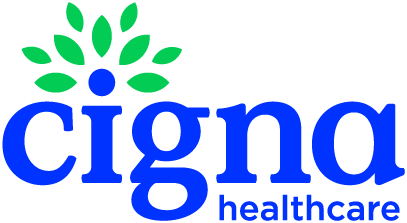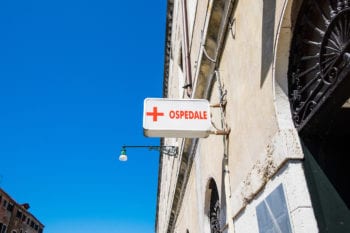
Healthcare System in Italy - Servizio Sanitario Nazionale

In December 1978, Italy created a national, universal health-care system, called the Servizio Sanitario Nazionale, or simply SSN. The SSN automatically covers all Italian citizens and legal foreign residents. It provides a full range of healthcare services with a free choice of providers. The service is free of charge at the point of service and is guided by the principles of universal coverage, solidarity, human dignity, and health. In principle, it serves as Italy's public healthcare system.
Although a national-level administration ensures that the general objectives and fundamental principles of the national health care system are met, the Italian Healthcare System is essentially regionally based. Therefore, Italy’s 19 regions and two autonomous provinces are responsible for delivering health services, which they do through local health units. The local health units each have a general manager, who is appointed by the regional governor. Each region has significant independence and the flexibility to determine its own priorities and goals. This regional structure also means that healthcare facilities may vary, in terms of quality, between the different regions of Italy. (For technical details on this regional/local structure, please read this report on the organization and financing of public health services in Italy.)
International organizations rate Italy's public health system highly. The Organisation for Economic Co-operation and Development (the OECD) consistently rates the SSN among the highest countries for life expectancy and the lowest in healthcare spending. The World Health Organization (WHO) ranked the Italian healthcare system among the best in the world, after the French healthcare system. Italians enjoy the 7th highest life expectancy in the world, as well as very low levels of infant mortality.
In December 1978, Italy created a national, universal health-care system, called the Servizio Sanitario Nazionale, or simply SSN. The SSN automatically covers all Italian citizens and legal foreign residents. It provides a full range of healthcare services with a free choice of providers. The service is free of charge at the point of service and is guided by the principles of universal coverage, solidarity, human dignity, and health. In principle, it serves as Italy's public healthcare system.
Although a national-level administration ensures that the general objectives and fundamental principles of the national health care system are met, the Italian Healthcare System is essentially regionally based. Therefore, Italy’s 19 regions and two autonomous provinces are responsible for delivering health services, which they do through local health units. The local health units each have a general manager, who is appointed by the regional governor. Each region has significant independence and the flexibility to determine its own priorities and goals. This regional structure also means that healthcare facilities may vary, in terms of quality, between the different regions of Italy. (For technical details on this regional/local structure, please read this report on the organization and financing of public health services in Italy.)
International organizations rate Italy's public health system highly. The Organisation for Economic Co-operation and Development (the OECD) consistently rates the SSN among the highest countries for life expectancy and the lowest in healthcare spending. The World Health Organization (WHO) ranks the Italian healthcare system second in the world, after the French healthcare system. Italians enjoy the 6th highest life expectancy in the world, as well as very low levels of infant mortality.
The Differences Between Italian Private and Public Healthcare
Does Italy have universal healthcare? Yes, it does, and its public health system is rated one of the best in the world, as almost all patient costs are covered. The system focuses on both preventative and prescriptive care. However, public healthcare facilities in Italy do vary in terms of quality, depending on the specific region. There are acknowledged concerns with hospital crowding and long waiting times at public facilities, but overall, the system is efficient and affordable.
Italy’s private health insurance system is not as standard as it might be in other countries. Firstly it is impossible for eligible people to opt out of the public system, so private insurance is always in addition to SSN coverage. Secondly, private medical insurance premiums in Italy are not tax-deductible, so most Italians choose to remain with the country’s public healthcare system, which is free.
Private health insurance in Italy can be divided into two categories. The first is corporate insurance. Just as the name suggests, this is private insurance paid for by companies. It covers employees and (sometimes) their families. In Italy, private health insurance is occasionally offered by employers as an employment bonus, but often not at the same level as provided by other countries.
Explore Italy Safely
Get a free quote for a comprehensive private medical Insurance plan now!
The second form of private health is non-corporate insurance. Either for-profit or non-profit organizations supply this type of policy and can be individual or collective. Of course, non-Italians may also buy international health insurance purchased in their home country before they move abroad.
Private medical insurance is also popular with patients living in southern Italy. This is because the public facilities in the south are more basic than they are in the north, so private insurance gives southern patients a greater number of healthcare options.
As with many countries, a major advantage of private health insurance in Italy is that patients have shorter waiting times to see specialists and can be sure of being treated in secure and comfortable facilities. Doctors and nurses working in private facilities are also more likely to speak English.
Also Read: Health Insurance in Italy for Foreigners and Expats
Challenges for Patients
In the Italian public healthcare system, patients may face challenges that are caused by the sheer number of people that need to be treated. Local general doctors’ offices (medico di base) normally don’t work on an appointment system. Patients are seen in the order they arrive in the office, so doctors’ surgeries are often overcrowded and have long waiting times.
Those who are new to the Italian healthcare system are often surprised to learn that they must register with one general practitioner within their Local Health Authority and cannot move freely between doctors. This can seem restrictive to patients who have come from countries with a strong emphasis on personal choice.
In Italy, waiting times for specialist appointments can be as long as several months. Part of the problem is that patients from the south, who are frustrated by the modest public health facilities, travel north for better and quicker services. Because of this, the public facilities in the north have even longer wait times, since they are (unofficially) serving more than one region.
Also Read: Health Plans for Italians Living Abroad
Costs of the Italian Healthcare System
The cost of using Italy’s health insurance system is low. In-patient care and primary care are free, as is visiting a doctor. However, the public health system uses a "co-pay" system (cost-sharing between the SSN and the patient) for specialist visits, diagnostic procedures, and prescription medication. Co-pays are normally not expensive, and the percentage that the patient is expected to contribute varies, according to the region and the treatment. The elderly, pregnant women, children, and the poor are exempt from co-pay requirements.
The Italian Public Healthcare system’s funding reflects the national, regional, and local structure of the SSN’s administration. It is mainly funded through national and regional taxes, supplemented by private expenditure and insurance plans. The regions are also allowed to generate their own additional revenue, which creates further interregional financing differences. Local health units are funded mainly through "capitated" budgets (where a medical provider is given a set fee per patient regardless of the required treatment).
Currently, Italy struggles with the question of how it will fund further programs to care for its rapidly aging population.
As complicated as the funding might seem, the distribution is even more complicated. The Ministry of Health provides funding to different regions within Italy. Exactly how much they receive is calculated using a formula that takes into account past spending and other factors. The regions then allocate their funds to the local health authorities, where they are spent. This system aims to keep the cost of health insurance in Italy affordable. You can find more details about the distribution of Italy’s public healthcare funds here.
Who is Eligible for the Italian Health Care System?
All Italian citizens and legal residents may benefit from the Italian public healthcare system. European Union citizens can also access SSN’s services if they hold a European Health Insurance Card (EHIC). This card is issued to EU citizens in their home countries, and it allows them to receive benefits in other EU countries at no cost. However, if they remain in Italy for longer than three months, they will have to register with a family physician at their local health authority office.
People who have just moved to Italy, including expats and retirees from non-EU countries, are not eligible for Italy's public health system straight away. First, they must finalize their residency status, and then they may apply for coverage. Expats must have both their residency status finalized and hold an Italian identity card before they apply for an Italian health insurance card, called the “tessera sanitaria.”
While waiting for their paperwork to be processed, or if they are moving to Italy as non-European Union citizens, travelers must prove they have private health insurance coverage. After they arrive, they have eight days in which to visit the local police station and present a health insurance policy that is valid throughout the duration of their stay. Non-residents must carry proof of private medical insurance. Later in this article, you can find recommendations for the best international medical plans for expats in Italy.
Explore Italy Safely
Get a free quote for a comprehensive private medical Insurance plan now!
Related: Expat Insurance Plans for Foreigners
How to Access and Receive Healthcare in Italy
There are several different ways to access healthcare in Italy: public medical practices, groups of private doctors working at medical centers (poliambulatori), and of course hospitals and specialists. Some online services offer virtual doctor’s consultations in English.
Do you need general medical care?
You can take advantage of the National Health Service, but you must register with the Servizio Sanitario Nazionale. When you register you will be asked to choose a family doctor, who you will be required to remain with. You will be asked to sign a social security agreement (medico convenzionato) that confirms your relationship with that doctor. If you have children aged below six, you will also need to select a pediatrician (pediatra).
Do you need medical care on the weekend or late at night?
Some Italian general practitioners will make house calls if the patient cannot go to a doctor's office or clinic because they are too sick. On the weekend and late at night (from 8 pm until 8 am), or if you cannot see your usual doctor, you can find primary care assistance at a Healthcare Assistance Continuity Center (usually known as Servizio di continuità assistenziale), where you will be seen by a National Public Healthcare doctor. These doctors’ services may be limited to prescriptions and refills, medical consultations and the dressing of minor wounds. This may also ask for a fee, depending on the local and regional rules. These public centers may also offer telephone consultations, although you will probably need to be able to speak Italian to use this option.
Are you having an emergency?
In an emergency where you require immediate attention, or to call an ambulance, dial 112 from any telephone in Italy. No country code is necessary if you are calling from within Europe.
If you are able, go to a hospital emergency department (pronto soccorso). All foreigners in Italy have the right to be treated in an emergency, whether or not they have proof of insurance.
Do you need to see a specialist?
You may ask your GP to refer you to a specialist or you can choose one on your own. However, if you do require attention from a specialist and want to take advantage of social security benefits, you must take your doctor’s referral with you when you go to the specialist. Specialists who work within the SSN have their consulting rooms (ambulatorio) in state hospitals, local health authority buildings or other centers. Some private specialists (privati accreditati) also treat social security patients. It is important to know that if you have X-rays or laboratory tests done, you must collect the results yourself and take them to your doctor or specialist.
How do I pay for my Italian healthcare?
If you’re registered with the SSN, then find the cashier (cassa) to pay your subsidized fee (ticket). Normally you must pay in cash, so don’t forget to take Euros with you. They will give you a receipt, which you must give to the specialist.
Certain patient categories pay a maximum amount for specialist treatment, including children under the age of six and those aged over 65. Income is also a factor. If your family income or your annual income is below a certain threshold, you will qualify for the minimum amount. The lower fees also apply to those who have disabilities or long-term, chronic illnesses, such as rheumatoid arthritis, diabetes, or epilepsy.
Insurance Options for Expats and Foreigners Living in Italy
Foreigners must have private medical insurance in Italy while they are waiting for residency to be granted. Proof of insurance is one of the required documents which have to be submitted with the residency paperwork.
For U.S. and non-U.S. Citizens Living in Italy

Cigna Global Insurance Plan
- Flexible plans tailored to your needs and budget
- 1.5M+ providers in 200+ countries
- 24/7 multilingual customer support

IMG Global Prima Medical Insurance Plan
- Five plan options and additional optional benefits to include
- Choice of the coverage area to reflect your geographical area of need
- Freedom to choose your health care provider wherever you are in the world
For U.S. Citizens Living in Italy

Xplorer Worldwide Medical Plan
- Unlimited annual and lifetime coverage
- Pre-existing conditions covered with prior insurance
- For U.S. citizens abroad or foreign nationals in the U.S.
Healthcare Options for Travel to Italy
It is strongly recommended that tourists and other short-term travelers to Italy and who are not from any EU member country have travel insurance, which includes medical coverage. Although tourists occasionally report being treated for minor disorders in hospitals for no cost, this is an exception rather than a rule. If travelers to Italy need diagnostic tests, hospital admission, or surgical care, they can expect to receive a large bill.
If a visitor’s travel time in Italy includes adventure activities or extreme sports, such as hiking and climbing in The Alps or scuba diving in the south, then they must ensure they are appropriately insured.

Atlas Travel Insurance
- Emergency medical, evacuation, repatriation benefits
- Choose between the basic and more extensive coverage
- Meets Schengen visa insurance requirements
- 24/7 worldwide travel and emergency medical assistance

Patriot Platinum Travel Insurance
- Maximum limits up to $8,000,000
- IMG pays 100% of medical expenses in-network
- Evacuation due to Natural Disasters & Political Unrest
Extreme Sports Travel Medical Coverage:

World Nomads Adventure Activities Travel Insurance
- Coverage for 150+ adventure activities
- 24/7 emergency assistance
- Baggage and gear cover



